
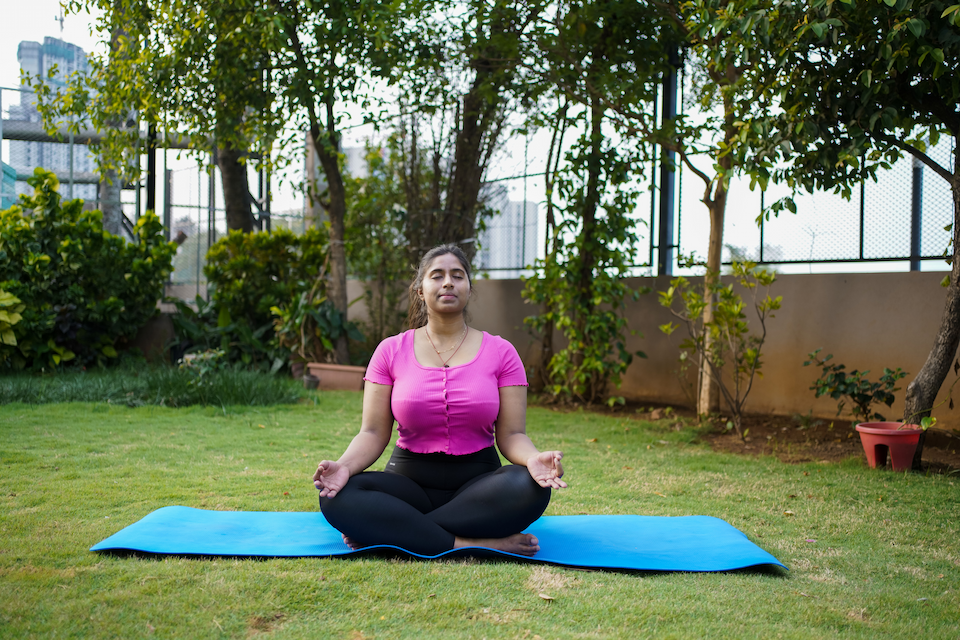
When anxiety strikes, it often feels like your thoughts are racing ahead of you, and your breath is struggling to catch up. But what if the key to slowing down is just in the way you breathe?
Research shows that slow-paced breathing techniques — like diaphragmatic and patterned breathing — can lead to significant reductions in stress and anxiety. By consciously controlling your breath, you can shift your body from the “fight or flight” state into “rest and digest” mode, helping your nervous system reset.
In this guide, you’ll discover 7 powerful, yoga-based breathing exercises for anxiety, each grounded in science, explained step by step, and designed to help you feel calmer in minutes. Whether you need instant anxiety relief, are struggling to fall asleep, or simply need to reset during the day, these mindful techniques can help restore peace and clarity.

These seven yoga-inspired breathing exercises enhance mindfulness and breath control to help you relax, refocus, and breathe through anxiety with ease:
[inline-CTA-1]
The 4-7-8 breathing method, developed by Dr. Andrew Weil, is often referred to as a “natural tranquilizer for the nervous system.” It’s especially helpful for calming anxiety at night or when your thoughts are racing.
Benefits:
A 2021 study published in Frontiers in Psychology found that paced breathing with extended exhalation (like in 4-7-8) significantly reduced self-reported anxiety levels.
When to Use It:
Common Mistakes:
Trusted by Navy SEALs and first responders, Box Breathing is a high-impact technique for grounding the mind and calming the nervous system under pressure. It brings your breath and your thoughts into a controlled rhythm that restores a sense of safety and presence.
Benefits:
Research confirms that rhythmic breathing like box breathing, reduces anxiety, especially in high-stakes environments.
When to Use It:
Common Mistakes:
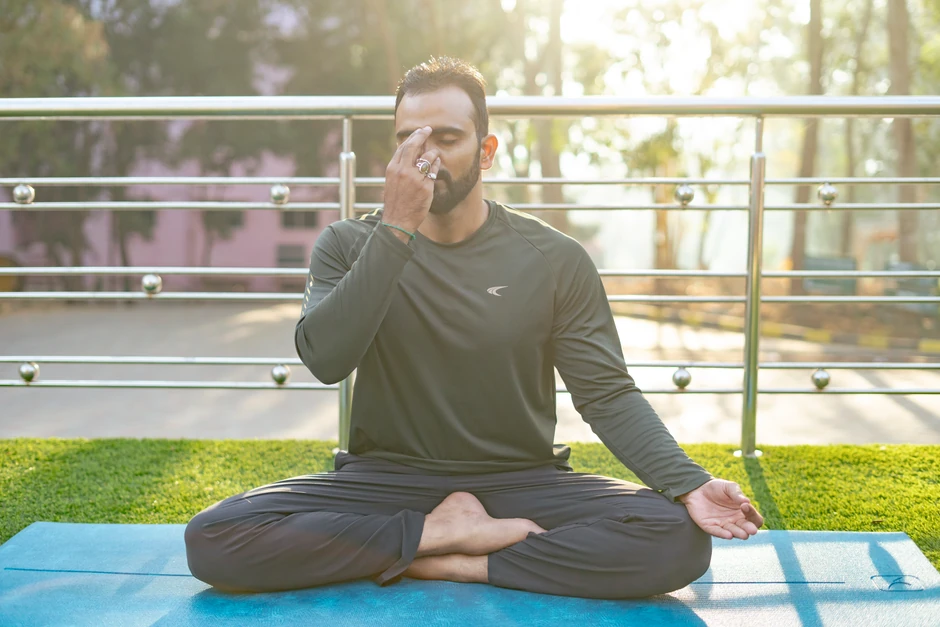
Rooted in ancient yogic tradition, Nadi Shodhana (Alternate Nostril Breathing) is known for its harmonizing effect on the nervous system. It’s ideal when your thoughts feel scattered or your body is on edge. This breath balances the left and right hemispheres of the brain and clears energy pathways.
Learn more about Alternate Nostril Breathing here!
Benefits:
Research suggests that Nadi Shodhana significantly reduced perceived stress and improved focus in students within just 10 minutes of practice.
When to Use It:
Common Mistakes:
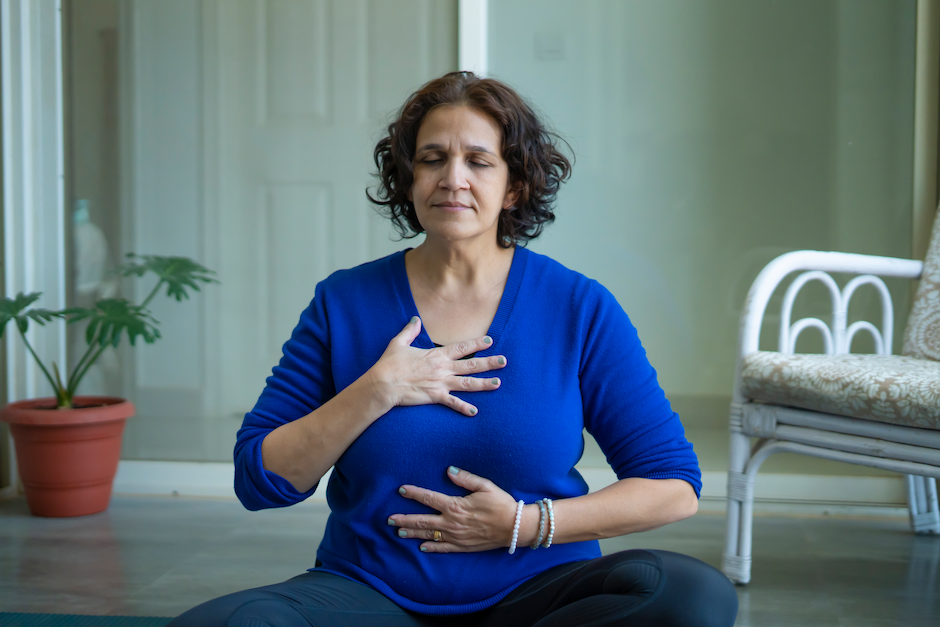
When anxiety strikes, many people breathe into their chest — shallow, fast, and tense. Belly breathing shifts the breath down into the diaphragm, telling your body it’s safe. It’s one of the most effective ways to reduce anxiety naturally and quickly.
Benefits:
A 2017 study in Frontiers in Psychology found that diaphragmatic breathing significantly reduced negative mood and cortisol levels in individuals under stress.
When to Use It:
Common Mistakes:
Sometimes anxiety can be trapped as physical tension in your jaw, face, and chest. Lion’s Breath, a yogic technique known for its bold expression, helps release that built-up stress, and is deeply effective in letting go of internal pressure.
Benefits:
When to Use It:
Common Mistakes:
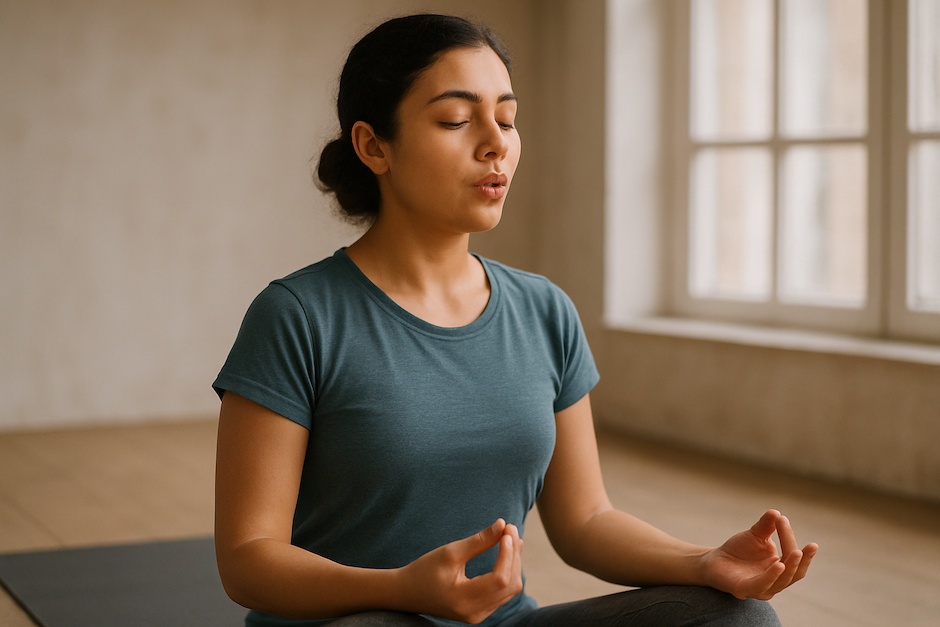
Also known as the “Victorious Breath,” Ujjayi breathing is a soothing, controlled breath technique that sounds like the ocean. It’s often used during yoga practice to build heat and focus, but it's equally powerful for calming anxiety and anchoring your attention.
Benefits:
A 2018 review noted Ujjayi breath’s role in reducing anxiety symptoms when combined with mindful movement and meditation.
When to Use It:
Common Mistakes:
Named after the humming sound of a bee, Bhramari Pranayama is one of the most calming breathing techniques in yoga. The gentle vibration created by humming during exhalation helps soothe the mind, reduce tension in the forehead and jaw, and create a deep sense of inner quiet.
Learn more about Humming Bee Breath here!
Benefits:
Studies show that regular Bhramari practice significantly reduces anxiety, especially in people with generalized anxiety disorder.
When to Use It:
Common Mistakes:
[inline-CTA-2]
Breathing exercises can shift your nervous system toward calm, and pairing them with gentle yoga postures amplifies the effect. These poses encourage expansion, release tension, and provide space for the breath to flow freely. Here are four calming poses that work beautifully alongside your breathing practice:
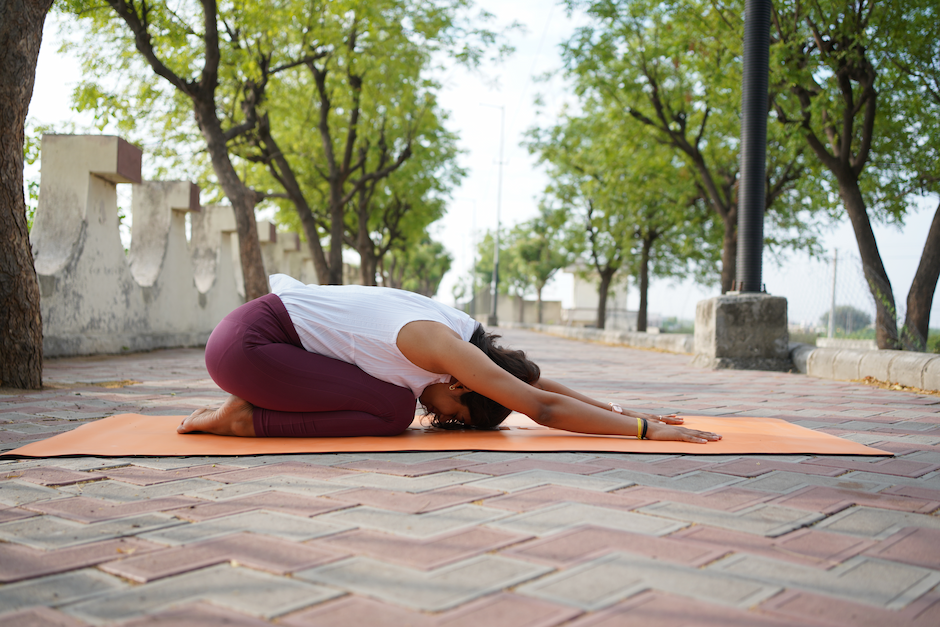
This forward-folding posture gently compresses the belly, making it easier to engage diaphragmatic breathing. It calms the nervous system and creates a safe, grounded space for breath awareness.
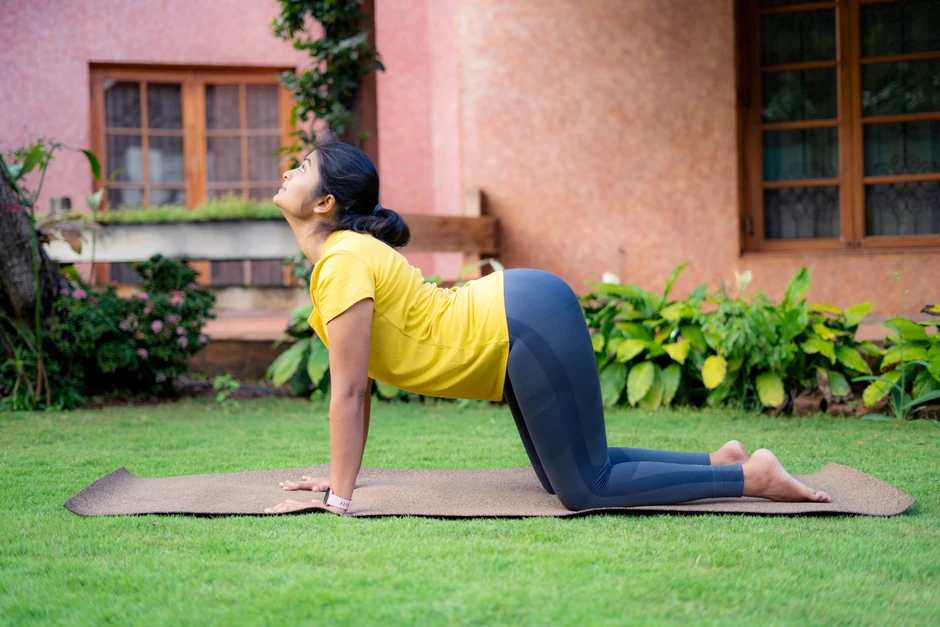
This gentle spinal flow links movement with breath, helping to open the chest and mobilize tension. It encourages fuller inhales and exhales, priming you for deeper breathing practices.
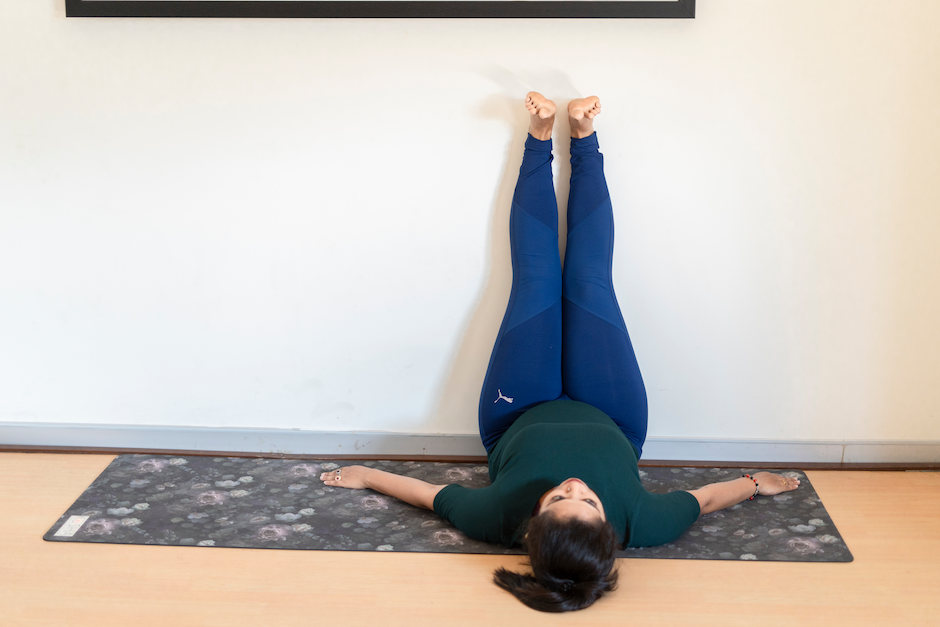
A passive inversion that encourages slow, unforced breathing. It relaxes the body, reduces nervous system arousal, and is perfect to pair with techniques like 4‑7‑8 or Ujjayi breath.
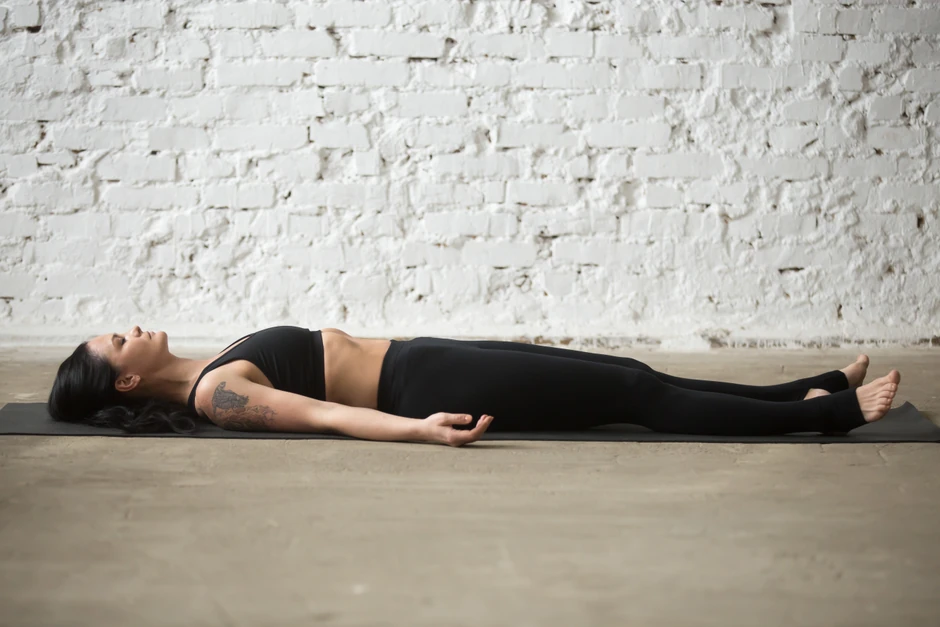
Savasana allows your breath to naturally slow and settle. It supports full nervous system relaxation, helping you absorb the effects of your breath practice.
To make these tools work in harmony, here’s a sample flow you might follow in your own practice:
There’s no one-size-fits-all, but 3–10 minutes per session is a great starting point. If you’re feeling anxious or overwhelmed, even 1–2 minutes can help. Over time, you can build up to 10–15 minutes daily for a deeper, lasting impact.
Breathwork is a powerful complementary tool, but it should not be used as a substitute for medication or therapy. However, many people find that regular breathing practice helps reduce reliance on medications or supports overall mental health management. Make sure to consult your doctor or psychologist before making a decision.
Box Breathing and 4-7-8 Breathing are two of the quickest, most effective options. They both activate the parasympathetic nervous system, slow the heart rate, and bring the body out of “fight or flight” in just a few cycles.
If you're mid-panic, try this:
Ideally, aim for daily practice, even if it’s just a few minutes in the morning or before bed. Consistency is key. You don’t need to wait for anxiety to arise — regular breathwork trains your nervous system to be more resilient and responsive to stress.
Most people benefit from breathwork, but the style and timing may vary. For some, slower techniques like Bhramari or Belly Breathing feel best. For others, more structured patterns like Box Breathing provide clarity and calm. Practice with a yoga therapist to understand what works best for you.

Receive personalized guidance tailored to your unique fitness goals, live with a dedicated coach—no credit card required.